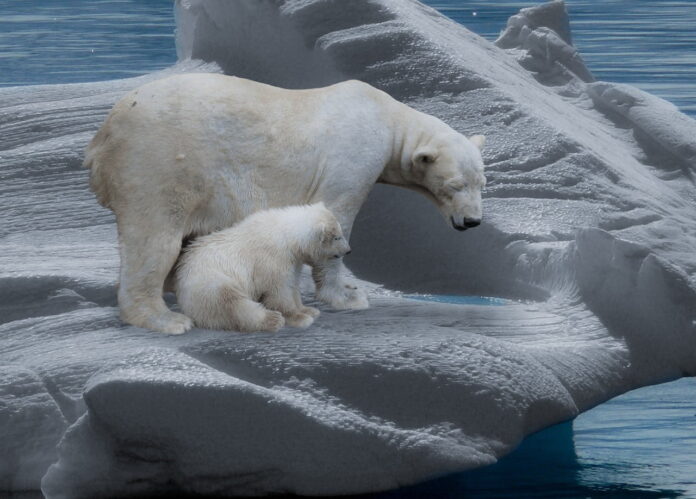Climate change is an existential threat that transcends borders, impacting every corner of the globe. Its effects are far-reaching, with natural habitats being among the most vulnerable to its consequences. The nexus between climate change and natural habitats is complex and multifaceted, involving a web of interdependencies that affect biodiversity, ecosystem services, and the health of our planet.
As global temperatures rise, so do the challenges for flora and fauna to survive and thrive. This article delves into the tangible impacts of climate change on local natural habitats, exploring the encroachment of rising tides on coastal ecosystems, the alterations of terrestrial habitats due to shifting soils, and the urgent need for mitigation and adaptation strategies to protect our natural world.
Rising Tides: The Encroaching Threat to Coastal Ecosystems
Coastal ecosystems, such as mangroves, salt marshes, and coral reefs, are on the frontline of climate change. Rising sea levels, a direct consequence of melting polar ice caps and thermal expansion of the oceans, pose an imminent threat to these habitats. As tides rise, they can inundate coastal areas, leading to erosion, habitat loss, and increased salinity that can devastate plant and animal species adapted to specific ecological conditions.
The impact of rising tides is not just limited to the loss of habitats. It also affects the livelihoods of millions of people who depend on these ecosystems for food, protection from storms, and economic activities such as tourism and fishing. For instance, coral reefs, which are already suffering from bleaching due to warmer waters, are further threatened by the physical damage caused by higher sea levels and more intense storms.
The loss of coastal habitats can exacerbate the effects of climate change. For example, mangroves and salt marshes play a crucial role in carbon sequestration. Their destruction not only releases stored carbon but also reduces the capacity of these natural sinks to absorb future emissions, creating a feedback loop that accelerates global warming.
Shifting Soils: How Climate Change Alters Terrestrial Habitats
Beyond the coasts, terrestrial habitats are also experiencing the impacts of a changing climate. Shifting soils, a term that encompasses soil erosion, degradation, and changes in composition, are a significant concern. Climate change can alter precipitation patterns, leading to both droughts and floods, which in turn affect soil moisture levels and fertility.
Droughts can cause soil to become dry and brittle, making it more susceptible to erosion by wind. Conversely, heavy rains can lead to soil being washed away, stripping the land of nutrients essential for plant growth. These changes not only affect the immediate area but can have downstream effects, such as sedimentation in rivers and lakes, which can impact aquatic ecosystems.
The changing climate also affects the distribution of plant species. As temperatures rise, some species may find their current habitats unsuitable and be forced to migrate to higher altitudes or latitudes. However, not all species can migrate quickly enough to keep pace with the changing conditions, leading to a loss of biodiversity.
Furthermore, pests and diseases that were once limited by climatic barriers are now expanding into new areas, affecting both plants and the wildlife that depends on them. The spread of invasive species, which can outcompete native flora and fauna, is another consequence of shifting soils and changing climatic conditions.
Case Studies: Local Natural Habitats Under Siege from Climate Change
To illustrate the tangible impact of climate change on local natural habitats, several case studies highlight the severity of the situation. In the Arctic, the melting of permafrost is releasing methane, a potent greenhouse gas, while also destroying the habitat of species such as the polar bear. In the Amazon rainforest, increased droughts and fires are not only reducing biodiversity but also affecting the forest’s ability to act as a carbon sink.
In coastal regions like the Sundarbans, shared by Bangladesh and India, rising sea levels are threatening the unique mangrove ecosystem, endangering the Bengal tiger and the livelihoods of local communities. In North America, the spread of bark beetles, exacerbated by warmer temperatures, has led to massive die-offs of forests, altering ecosystems and increasing wildfire risks.
These case studies demonstrate that the effects of climate change on natural habitats are not hypothetical future concerns but current realities that require immediate attention.
Mitigation and Adaptation: Strategies to Protect Our Natural Habitats
Protecting natural habitats in the face of climate change requires a two-pronged approach: mitigation and adaptation. Mitigation involves reducing the greenhouse gas emissions that drive climate change, while adaptation entails adjusting natural and human systems to minimize the damage caused by climate impacts.
Mitigation strategies include protecting and restoring ecosystems that act as carbon sinks, such as forests, peatlands, and coastal wetlands. Transitioning to renewable energy sources, promoting sustainable agriculture, and reducing deforestation are also critical components of a comprehensive mitigation plan.
Adaptation strategies for natural habitats might involve creating wildlife corridors to facilitate species migration, implementing conservation programs to protect endangered species, and restoring degraded ecosystems. Additionally, integrating climate change considerations into land-use planning and development policies can help reduce the vulnerability of natural habitats.
The Urgent Need for Action to Preserve Biodiversity in a Changing Climate
The tangible impact of climate change on local natural habitats is undeniable. Rising tides and shifting soils are not just metaphors but stark realities that threaten the intricate web of life that sustains our planet. The loss of biodiversity and ecosystem services has profound implications for humanity and underscores the urgent need for action.
To preserve the natural world for future generations, it is imperative that we address climate change with the seriousness it demands. This involves not only implementing effective mitigation and adaptation strategies but also fostering a global commitment to sustainability and conservation. The time to act is now, as the tides continue to rise and the soils beneath our feet continue to shift. Our response to this crisis will define our legacy and the health of our planet for centuries to come.
